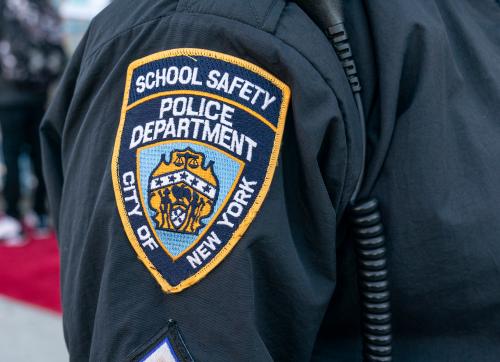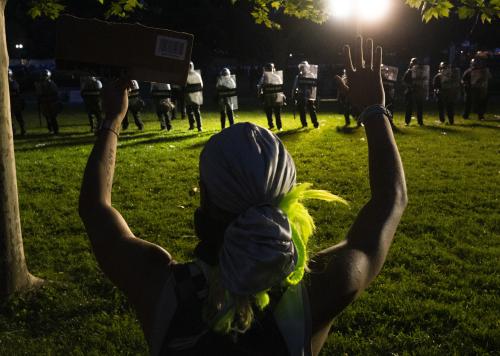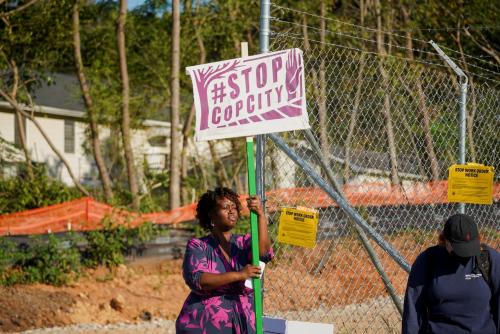While the American juvenile justice system has recently undergone a wave of progressive reforms focused on creating pathways to re-entry, there remains an uneven treatment of juvenile records that makes it difficult for returning youth to rebound from their involvement with the justice system. Recently, the Race, Prosperity, and Inclusion Initiative (RPII) at Brookings convened a panel of experts to assess the state of play on juvenile criminal justice records policy: Seema Gajwani, special counsel for juvenile justice at Washington, D.C.’s Office of the Attorney General; Kelly Murphy, deputy program director at Child Trends; Ismael Nazario, prison reform advocate at the Fortune Society; and Joy Radice, associate professor of law at University of Tennessee. Brookings Senior Fellow Camille Busette, who also serves as the director of RPII, moderated the event.
Overview of the juvenile justice system
Morris Clarke, a member of the Brookings Council, opened the event with an overview of the state of the juvenile justice system. His presentation (downloadable here) noted a national decline in youth imprisonment despite a widening gap among racial minorities, and disparate regulatory oversight of criminal records that impedes youth advancement.
State laws vary significantly around youth criminal records, says Morris Clarke. This creates complex problems for young people, hindering their prospects for employment and education. #JuvenileJustice pic.twitter.com/Uxsu5CND6M
— Brookings Governance (@BrookingsGov) March 20, 2019
Juvenile records are extensive and diverse
Busette began the panel discussion with a foundational question: “When we talk about juvenile records, what are we talking about?” A salient theme was the common misconception that records are exclusive to the court system. In reality, they are extensive and diverse, routinely distributed across a wide spectrum of parties comprising law enforcement, housing, schools, and other entities.
Uneven laws expose juvenile records
The focus then shifted to the complex mosaic of state laws that oversee records and the rampant loopholes that often expose a youth’s criminal history to public scrutiny. Radice highlighted how the prior “tough on crime” approach has not only influenced the divergence in the main legal statutes that govern records–confidentiality, expungement/sealing, and non-disclosure—but has also largely swung juvenile court practices into tandem with that of adults, deepening record-sharing among parties. “One of the things that we haven’t done a good job of is pushback on the dissemination of those records in both directions,” she remarked. Radice further underscored the less commonly used non-disclosure provision. This acts as a fundamental safeguard against unfettered public access by prohibiting entities from disclosing information except in limited circumstances, and by legally allowing youth to deny the existence of a record on an application if it has been sealed and/or expunged.
Gajwani also drew upon her experiences in D.C. on the pervasive gaps in the system. Although most adolescent records within the nation’s capital are confidential, she noted that children’s data can still easily be released into the public sphere through being charged for serious crimes, such as a sexual offense or by relocating to a jurisdiction with less robust laws.
Seema Gajwani: While some states have relatively strong protections over #JuvenileJustice records, the variation of expungement policies can allow arrest/court records to follow young people if they seek opportunities in different areas. pic.twitter.com/nF6nRgOujN
— Brookings Governance (@BrookingsGov) March 20, 2019
Adding to this complexity is the prevalent misrepresentation of criminal backgrounds, largely a consequence of unregulated private entities that offer quick and easy access to often outdated information, frequently accessible online for a fee. The absence of stringent state regulations requiring up-to-date records in this industry only lengthens—and, in many instances, makes permanent—the public shelf life of one’s criminal history, even if ex-offenders were acquitted or the trial was dismissed. Nazario concurred on this point, remarking upon the enduring social stigma that a record places on a young person’s life. “Even if … you’re acquitted at the trial, when they run the background check, it still pops up that you were charged,” he said. “It never disappears.”
Research continues to drive progressive reforms
Nonetheless, mounting scholarship on adolescents and medical science continue to yield promising developments for the field, as highlighted by Murphy. Key developmental differences between adults and youth and the adverse effects that incarceration bears on a child’s well-being have produced sweeping reforms. These include key Supreme Court decisions to overturn the juvenile death penalty for life without parole, and mainstreaming rehabilitative interventions over detention.
Potential remedies and the way forward
What sets of policy prescriptions can deliver the most impactful change? Radice referenced the 2015 American Bar Association Model Act, a holistic framework for managing and protecting juvenile records that several states have increasingly incorporated.
Joy Radice on how to improve policy around #juvenilejustice records:
1️⃣ Strong standard of confidentiality from the beginning
2️⃣ Widen scope of records that are available for expungement
3️⃣ Robust nondisclosure statutes pic.twitter.com/ALXia3ET9q— Brookings Governance (@BrookingsGov) March 20, 2019
Also touched upon was tackling the entrenched racial inequities in the school-to-prison pipeline, and how leading states such as Maryland have banned suspensions for early grades and instituted limits for first-time offenses.
Lastly, there was wide consensus on the importance of embedding a deeper level of human sensitivity in the criminal justice system’s treatment of children—a fundamental concept often lost in the common use of the term juveniles, which tends to depict youth as semi-adults rather than simply as kids. The latter term, however, serves as a poignant reminder of the inherent vulnerability and unique capacity for change and growth that children possess as they embark upon the very early and fragile stages of life. “Our system, even our policy discussions, dehumanizes all the people in it,” Gajwani said. “[When we talk about these things,] it’s not about a ‘child,’ it’s about a ‘criminal’ or an ‘offender.’” It was at that moment that Nazario chimed in: “Emphasize the word ‘child.’ Let’s not forget ‘child.’”
Watch the full discussion on youth criminal justice records here.
The Brookings Institution is committed to quality, independence, and impact.
We are supported by a diverse array of funders. In line with our values and policies, each Brookings publication represents the sole views of its author(s).






Commentary
For juvenile criminal records, privacy is too often a myth
May 30, 2019